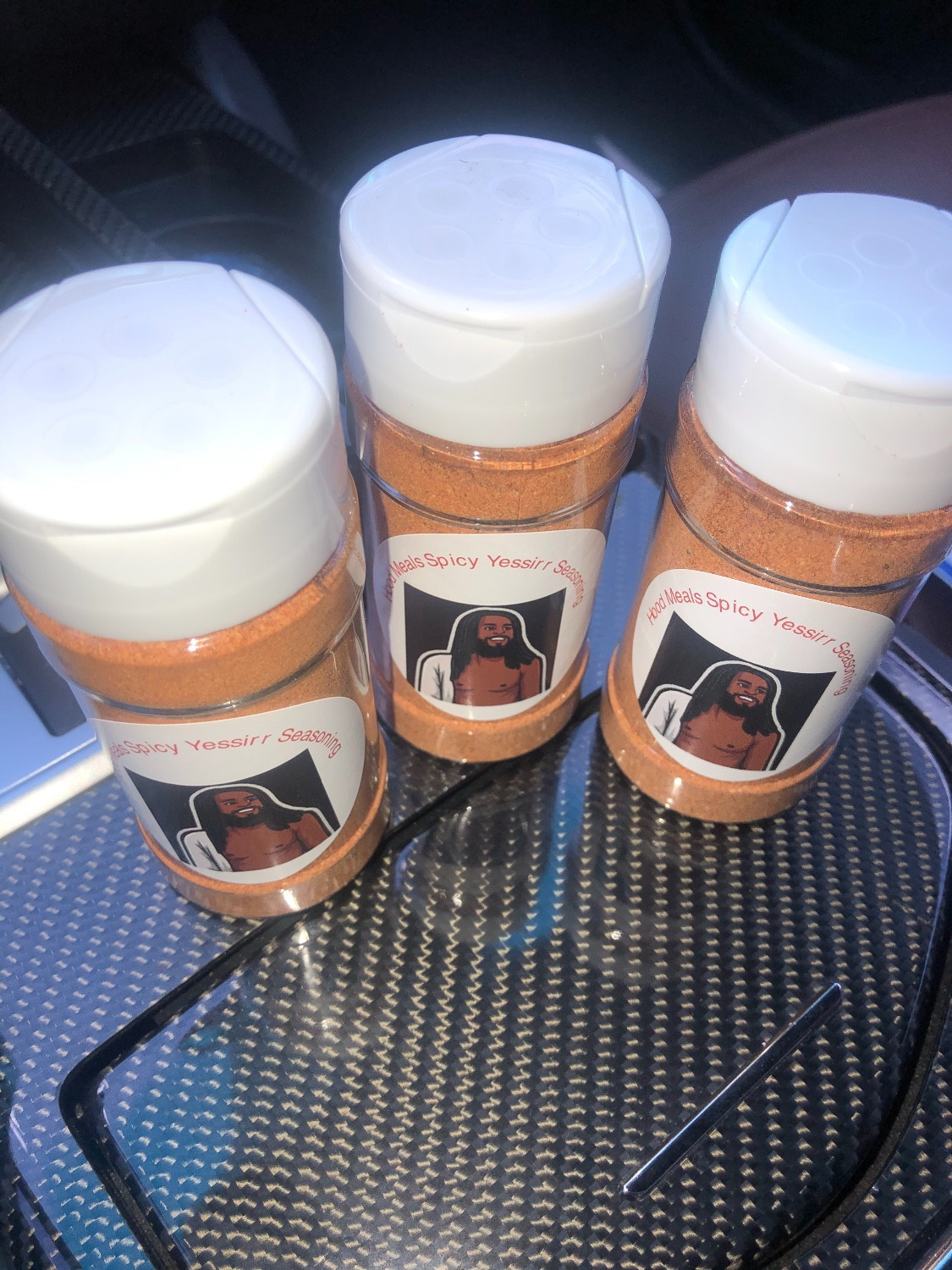Hood meals have emerged as a powerful solution to address food insecurity in underserved communities. In recent years, the concept of hood meals has gained significant attention as a way to provide affordable, nutritious, and culturally relevant food options to people who need them most. This initiative not only tackles the issue of hunger but also empowers local economies by supporting small businesses and fostering community connections.
The significance of hood meals extends beyond just providing food. It represents a movement that focuses on creating sustainable solutions to systemic issues affecting marginalized populations. By offering meals that are both affordable and nutritious, hood meals aim to improve the overall health and well-being of individuals and families living in low-income neighborhoods.
In this article, we will explore the concept of hood meals in detail, including its origins, benefits, challenges, and the impact it has on communities. We will also discuss how you can get involved in supporting or starting a hood meals program in your area. Whether you are a community leader, a business owner, or simply someone who cares about social justice, this article will provide valuable insights into the transformative power of hood meals.
Read also:Unlocking The Power Of Data Cne A Comprehensive Guide To Success
Table of Contents
- What Are Hood Meals?
- History of Hood Meals
- Importance of Hood Meals
- Benefits of Hood Meals
- Challenges Facing Hood Meals
- How to Start a Hood Meals Program
- Success Stories
- Nutrition and Hood Meals
- Economic Impact of Hood Meals
- Future of Hood Meals
What Are Hood Meals?
Hood meals refer to affordable, nutritious meals provided to individuals and families in underserved communities. These meals are often prepared by local businesses, non-profits, or community organizations and distributed through various channels, such as pop-up kitchens, food trucks, or community centers. The primary goal of hood meals is to ensure that everyone, regardless of their economic status, has access to healthy and culturally relevant food.
Hood meals are not just about feeding people; they are about building communities. By offering meals that are both affordable and nutritious, hood meals programs help bridge the gap between food insecurity and health. They also promote inclusivity by offering food options that cater to diverse cultural preferences and dietary needs.
History of Hood Meals
The concept of hood meals has its roots in grassroots movements aimed at addressing food insecurity in urban areas. In the early 2000s, community leaders and activists began organizing initiatives to provide free or low-cost meals to people living in low-income neighborhoods. These early efforts laid the foundation for what we now know as hood meals programs.
Key Milestones in Hood Meals Development
- 2005: The first hood meals initiative was launched in a major U.S. city, focusing on providing meals to underserved communities.
- 2010: The movement gained momentum as more organizations joined the effort, leading to the establishment of national networks supporting hood meals programs.
- 2020: During the pandemic, hood meals programs played a crucial role in ensuring food security for millions of people worldwide.
Importance of Hood Meals
Hood meals are vital in addressing food insecurity, which affects millions of people globally. According to the World Health Organization (WHO), approximately 690 million people worldwide do not have enough food to eat. Hood meals programs help reduce this number by providing accessible, nutritious food options to those in need.
In addition to combating hunger, hood meals also address the broader issue of nutrition. Many people living in low-income areas lack access to healthy food options, leading to a higher prevalence of diet-related diseases such as diabetes and obesity. Hood meals programs aim to combat these issues by offering meals that are rich in essential nutrients and free from harmful additives.
Benefits of Hood Meals
Hood meals offer numerous benefits to individuals and communities. Below are some of the key advantages:
Read also:Understanding The Role Of A Legal Hitman A Comprehensive Guide
- Improved Health: Hood meals provide access to nutritious food, which helps improve overall health and well-being.
- Community Empowerment: By involving local businesses and organizations, hood meals programs empower communities to take charge of their food security.
- Economic Growth: Hood meals initiatives often support small businesses, contributing to local economic growth and sustainability.
- Cultural Relevance: Hood meals programs offer food options that cater to diverse cultural preferences, promoting inclusivity and respect for different traditions.
Challenges Facing Hood Meals
Despite their numerous benefits, hood meals programs face several challenges that hinder their effectiveness. Some of these challenges include:
- Funding: Securing consistent funding is a major challenge for many hood meals initiatives, as they often rely on donations and grants.
- Logistics: Distributing meals efficiently to large populations can be logistically complex, especially in areas with limited infrastructure.
- Sustainability: Ensuring the long-term sustainability of hood meals programs requires careful planning and collaboration with stakeholders.
How to Start a Hood Meals Program
If you are interested in starting a hood meals program in your community, here are some steps to consider:
Step 1: Assess Community Needs
Conduct a needs assessment to determine the specific food security challenges faced by your community. This will help you tailor your program to meet the unique needs of the population you aim to serve.
Step 2: Build Partnerships
Collaborate with local businesses, non-profits, and government agencies to secure resources and support for your hood meals program. Building strong partnerships is essential for the success and sustainability of your initiative.
Step 3: Develop a Plan
Create a detailed plan outlining the goals, objectives, and strategies of your hood meals program. Include a budget, timeline, and evaluation framework to ensure accountability and effectiveness.
Success Stories
Several hood meals programs have achieved remarkable success in addressing food insecurity and improving community health. For example, the "Feed the Hood" initiative in Los Angeles has provided over 1 million meals to underserved communities since its inception. Similarly, the "Hood to Table" program in Chicago has empowered local farmers and chefs to create sustainable food solutions for urban neighborhoods.
Nutrition and Hood Meals
Hood meals programs prioritize nutrition by offering meals that are rich in essential vitamins and minerals. According to research published in the Journal of Nutrition, diets rich in fruits, vegetables, and whole grains can significantly reduce the risk of chronic diseases. Hood meals initiatives ensure that their offerings align with these nutritional guidelines, promoting better health outcomes for participants.
Key Nutritional Components of Hood Meals
- High in fiber
- Rich in vitamins and minerals
- Low in saturated fats and added sugars
Economic Impact of Hood Meals
Hood meals programs have a positive economic impact on communities by supporting local businesses and creating jobs. According to a report by the Food Research & Action Center (FRAC), every dollar invested in food assistance programs generates approximately $1.50 in economic activity. This multiplier effect helps stimulate local economies and improve overall community well-being.
Future of Hood Meals
The future of hood meals looks promising as more organizations and governments recognize the importance of addressing food insecurity. Innovations in technology, such as mobile apps and online platforms, are making it easier to connect people with hood meals programs. Additionally, increased awareness and advocacy are driving more funding and resources toward these initiatives.
Potential Developments
- Expansion of hood meals programs to rural areas
- Increased collaboration between public and private sectors
- Integration of technology to enhance program efficiency
Conclusion
Hood meals represent a powerful solution to food insecurity, offering affordable, nutritious, and culturally relevant food options to underserved communities. By addressing the root causes of hunger and promoting community empowerment, hood meals programs have the potential to create lasting change. As we look to the future, it is crucial that we continue to support and expand these initiatives to ensure that everyone has access to the food they need to thrive.
We invite you to take action by getting involved in a hood meals program in your area. Whether through volunteering, donating, or advocating for policy change, your contributions can make a significant difference in the lives of those facing food insecurity. Share this article with your network and encourage others to join the movement toward a more equitable and sustainable food system.

